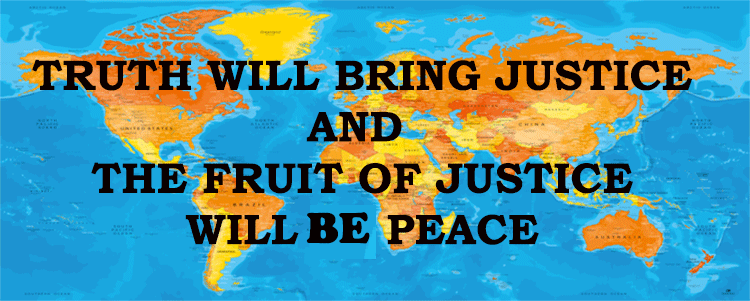READING HALLTHE DOORS OF WISDOM |
 |
 |
 |
PRINCE HENRY THE NAVIGATOR
IV
MARITIME EXPLORATION. CIRCA 1250-1410.
Italian, Catalan, French, and English sailors were the
forerunners of the Portuguese in the fourteenth century, and the latter years
of the thirteenth. And as in land travel, so in maritime, the republics of
Italy, Amalphi, Pisa, Venice, and Genoa, were the
leaders and examples of Europe. Just as the Italian Dante is the first great
name in the new literatures of the West, so the Italian Dorias and Vivaldi and Malocelli are the first to take up again the old Greek and Phoenician
enterprise in the ocean. Since Hanno of Carthage and Pharaoh Necho’s Tyrians, there had been nothing in the nature of a
serious trial to find a way round Africa, and even the knowledge of the Western
or Fortunate Islands, so clear to Ptolemy and Strabo, had become dim. The
Vikings and their crusader-followers had done nothing south of Gibraltar
Straits.
But while the Crusades were still dragging along a
weary and hopeless warfare under St. Louis of France and Prince Edward of
England, discovery began again in the Atlantic. In 1270 Lancelot Malocello found the Canaries; in 1281 or 1291 the Genoese
galleys of Tedisio Doria and the Vivaldi, trying to “go by sea to the ports of India to trade there”,
reached Gozora or Cape Non in Barbary, the southern
Ultima Thule, and according to a later story “sailed the Sea of Ghinoia (Guinea) to a city of Ethiopia”, where even legend
lost sight of them, for in 1312 nothing more had been heard. From the frequent
and emphatic references to this attempt in the literature of the later Middle
Ages, it is clear that the daring Genoese drew upon themselves the attention of
the learned and mercantile worlds, as much as one would naturally expect. For
these men are the pioneers of Christian explorations in the southern world—the
precursors of all the ocean voyages that led to the discoveries of Prince
Henry, Da Gama, Columbus, and Magellan,—the first who directly challenged the
disheartening theories of geographers, such as Ptolemy, the inaction and
traditionalism of the Arabs, and the elaborate falsities of story tellers, who,
in the absence of real knowledge, had a grand opening for terrible fairy tales.
The first age, if so it may be called, of South
Atlantic and African voyages was purely Italian; the second was chiefly marked
by the efforts of the Spanish States to equip fleets and send out explorers
under Genoese captains. In 1317 the Genoese Emmanuel Pessanha became Admiral of Portugal; in 1341 three ships manned by Portuguese and other
Spaniards with some Italians put out from Lisbon in search of Malocellos Rediscovered islands, granted by the Pope to Don
Luis of Spain in a Bull of November 15, 1334, and now described, from the
original letters of Florentine merchants and partners in the venture of 1341,
by Boccaccio. “Land was found on the fifth day after leaving the Tagus” (July
1); the fleet stayed till November, and then brought back four natives and
products of the islands. The chief pilot thought these were near nine hundred
miles from Seville, and we may fully suppose that the archipelago of thirteen,
now first explored and described, represents the Fortunate Islands of Greek
geography, the Canaries of modern maps, and that the five chief islands with
their naked but not quite savage people, with excellent wood houses, and flocks
of goats, palms, and figs, gardens and corn patches, rocky mountains and pine
forests, were our Ferro, Palma, Gomera, Grand Canary, and Teneriffe.
The last they took to be thirty thousand feet high, with its white scarped
sides looking like a fortress, but terrified at signs of enchantment they did
not dare to land, and returned to Spain, leaving the Islands of the Rediscovered
to be visited as a convenient slave depot by merchants and pirates from the
Peninsula till the Norman Conquest of Béthencourt in
1402.
The voyage of 1341 gained much by attempting little;
the Catalan voyage of 1346, which followed close upon it, was something of a
return to the wilder and larger schemes of the first Genoese. On August 10,
1346, Jayme Ferrer left Majorca “to go to the River of Gold”, but of the said
galley, says the Catalan map of 1375, no news has since been heard. On the same
map, however, the explorers’ boat is sketched off the “Cape Finisterre of west
Africa”, and there is, after all, some ground for supposing this to be nothing
more than a mercantile venture to the Gold Coast of Guinea, which was becoming
known to the traders of Nimes, Marseilles, and the Christian Mediterranean by
the caravan traffic across the Sahara. Even Prince Henry began in the same way;
Guinea was his half-way house for India.
About the same date (c. 1350) as the Catalan voyage is
the Book of the Spanish Friar, “of the voyage south to the River of Gold”,
which gives a more than half fabulous story of travel, first by sea beyond
Capes Non and Bojador, then by land across the heart
of Africa to the Mountains of the Moon, the city of Melli,
where dwelt Prester John, and “the Euphrates, which comes from the terrestrial
Paradise”, where behind some real notes of Barbary coasting, perhaps gained
from the Catalans of 1346, there is little but a confused transcript of Edrisi’s geography. Yet this was one of the books which
helped to fix the notion of a double Nile, Northern and Western, a Nile of
Egypt and a Nile of the Blacks, with a common source in the Mountains of the
Moon, upon the Christian science of the time, as the Arab geographers had fixed
it upon Islam.
The next piece of Atlantic exploration was a romantic
accident. In the reign of Edward III, an Englishman named Robert Machin eloped
with Anne d’Arfet from Bristol (c. 1370), was driven
from the coast of France by a north-east wind, and after thirteen days sighted
an island, Madeira, where he landed. His ship was swept away by the storm, his
mistress died of terror and exhaustion, and five days after Machin was laid
beside her by his men, who had saved the ship’s boat and now ran her upon the
African coast. They were enslaved, like other Christian captives of the Barbary
corsairs, but in 1416 a fellow-prisoner, one Morales of Seville, an old pilot,
was ransomed with others and sent back to Spain. On his way Morales was
captured by a Portuguese captain, Zarco, the servant
of Prince Henry, the rediscoverer of Madeira, and through this the full story
of Machin and his island, came to be known in the court of the Navigator
Prince, who promptly made his gain of the new knowledge a lasting one, by the
voyage of Zarco in 1420.
Last among the immediate predecessors of Prince
Henry's seamen come the French. In the seventeenth century it was claimed, on
newly found evidence, that between 1364 and 1410 the men of Dieppe and Rouen
opened a regular trade in gold, ivory, and malaguette pepper with the coast of Guinea, and built stations at Petit Paris, Petit
Dieppe, and La Mine, which they named from the precious metal found there. But
all this is more than doubtful, and the genuine Norman voyage of De Béthencourt in 1402 shows us nothing but the Canaries and
the north-west coast of Morocco. Cape Non, or Cape Bojador,
was still the European Furthest on the African coast.
The French Seigneur was stirred up to attack the
Fortunate Islands by two events. First in 1382 one Lopez, a captain of Seville
sailing to Gallicia, was driven by a tempest to Grand
Canary, and lived among the natives seven years till he and his men were denounced
for writing home and inviting rescue. To stop this intrigue they, the
"thirteen Christian brothers" whose testament reached Béthencourt twelve years later, were all massacred. News of
this and of the voyage of a Spaniard named Becarra to
the same islands at the same time, reached Rochelle about 1400, and found
several French adventurers ready for a trial. The chief of these, Jean de Béthencourt, Lord of Grainville,
and Gadifer de la Salle, a needy knight, started in
July, 1402, to conquer in the sea a new kingdom for themselves. Though the
leaders quarrelled and Grand Canary beat off all
attacks, the enterprise was successful in the main, and several of the islands
became Christian colonies,—a first step towards the colonial empires of the
great European expansion, as the record of Béthencourt’s chaplains is the first chapter of modern colonial history.
But nothing is clearer in this tract than its
limitations. The French colonists as late as 1425 seem to know nothing of the
African coast beyond Cape Bojador; they look upon the
Canaries rather as an extension of Spain and of Europe than as the beginning of
a new world. They are anxious to get to the River of Gold and traffic there,
but they do not know the way, save by report. De Béthencourt had been to Bojador himself, and “if things in that
country are such as they are described in the Book of the Spanish Friar”, he
meant to open a way to the River of Gold, for, the Friar says, “it is only one
hundred and fifty leagues from Cape Bojador, and the
map proves the same—which is only a three days’ voyage for sailing
boats—whereby access would be gained to the land of Prester John, whence come
so many riches”. But as yet our Normans are only “eager to know the state of
the neighbouring countries, both islands and terra firma”: they do not know the coast beyond the Utmost
Cape of Bojador, which had taken the place of the
first Arab Finisterre, Cape Non, Nun, or Nam, as the limit of navigation.
We are now at the very time of Prince Henry himself;
his first voyage was in 1412. De Béthencourt died in
1425, and it is quite needless to follow out at length the stories, however
interesting, of sporadic navigation in other parts of the European Seas.
Between 1380-95 the Venetian Zeni sailed in the
service of Henry Sinclair, Earl of the Orkneys, to Greenland, and brought back
fisher stories, which read like those of Central America, of its man-eating
Caribs and splendid barbarism. Somewhat earlier, about 1349, Ivar Bardsen of Norway paid one of the last of Christian visits
to the Arctic colonies of Greenland, the legacy of the eleventh century, now
sinking into ruin; but neither of these voyages gives us any new knowledge of
the Unknown which was now being pierced, not from the North and East, but from
the South and West.
Both in land travel and sea voyages we have traced the
progress of Western exploration and discovery up to its Hero, the real central
figure both in the history of Portugal and of the European expansion. A little
remains to be said on the other lines of preparation for his work in scientific
theory and national development from the Age of the Crusades.
V
GEOGRAPHICAL SCIENCE IN CHRISTENDOM FROM THE FIRST CRUSADES. CIRCA 1100-1460.
|
 |
 |
 |
 |
 |
 |